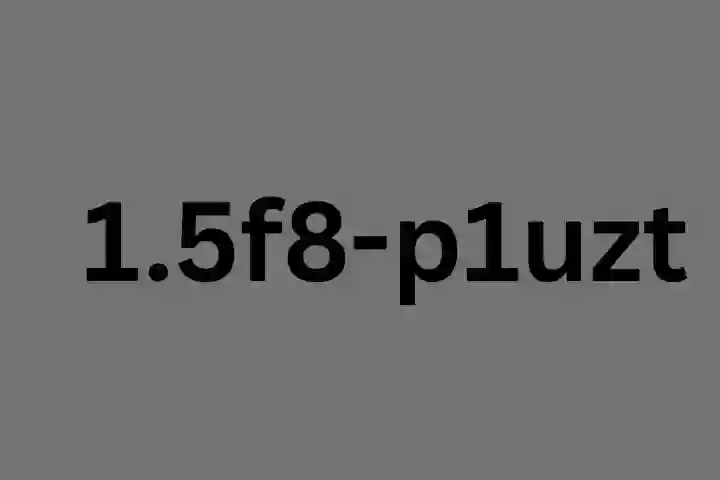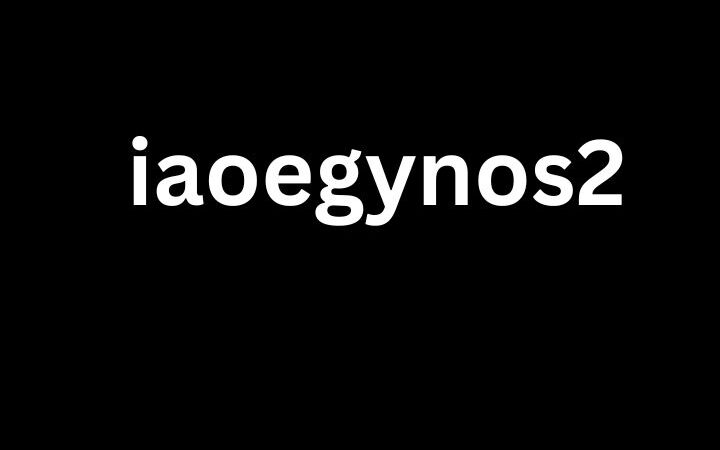1.5f8-p1uzt: The Complete Guide to Understanding Modern Digital Identifiers

1.5f8-p1uzt is a unique alphanumeric identifier often used to represent a specific version, configuration, or digital asset within a system. At first glance, it may seem random, but such codes serve a crucial purpose in maintaining consistency across software builds, data pipelines, or creative workflows. Each section of the identifier can carry information about versioning, build numbers, or commit references.
In modern development environments, identifiers like 1.5f8-p1uzt ensure traceability and reproducibility. They allow teams to pinpoint exact versions of code or assets, reducing confusion and improving collaboration. In a world driven by automation, these compact identifiers quietly uphold digital order.
Table of Contents
Introduction
What is 1.5f8-p1uzt?
At first glance, 1.5f8-p1uzt looks like an arbitrary alphanumeric code — a mix of digits, letters, and a dash that could belong to a product, a software version, or a hidden configuration tag. But in many digital and technical circles, identifiers like this serve an important purpose. They encapsulate versions, model references, or unique resource signatures used in software builds, datasets, or development pipelines.
In essence, 1.5f8-p1uzt can be understood as a symbolic identifier — a shorthand that could represent a particular configuration, module, or system release. Whether you’re a developer, designer, or simply an enthusiast encountering this term, understanding what such identifiers signify helps demystify how modern systems organize, track, and manage their internal components.
Why It Matters / Why People Are Curious
The curiosity around 1.5f8-p1uzt stems from how often cryptic identifiers appear in digital products and documentation without explanation. They may look meaningless, but they usually encode something vital: version numbers, encryption hashes, or internal references that help systems stay consistent.
Moreover, identifiers like this are now part of the language of technology. In an age of open-source collaboration, distributed cloud systems, and machine-generated content, unique identifiers keep everything synchronized. Understanding what 1.5f8-p1uzt represents is also understanding how modern computing stays coherent across billions of moving parts.
What This Guide Will Cover
This guide explores everything about 1.5f8-p1uzt — from its structural breakdown and potential origins to its use cases, implementation strategies, and possible future. We’ll also discuss why identifiers like it matter for technical precision, interoperability, and traceability.
Origins & Background
How the Name Works (e.g. “1.5”, “f8”, “p1uzt”)
Let’s deconstruct the identifier:
- 1.5 – Typically, a version indicator. In many systems, “1.5” suggests a mid-cycle release — not a full overhaul (which might be 2.0), but a significant update from version 1.0.
- f8 – This could represent a feature tag or a minor build number. In programming, “f8” might also reference hexadecimal notation, meaning 248 in decimal.
- p1uzt – Likely a unique hash fragment or commit signature. In version control (e.g., Git), short hashes like this help identify exact commits or configurations.
Together, 1.5f8-p1uzt reads like a compact yet descriptive version key: version 1.5, build f8, commit p1uzt — enough information to pinpoint a specific state of a system.
Speculated Origin Stories
Many identifiers like 1.5f8-p1uzt arise organically during software development. Sometimes, developers concatenate numbers and hash fragments to distinguish one build from another. In other contexts, the name might emerge from automated tools — for example, CI/CD pipelines that assign unique build IDs.
There’s also a human element: developers often embed personal shorthand or mnemonic hints into IDs. “f8,” for example, could refer to a function key, an event name (“Facebook F8”), or even an inside joke from a project team. Over time, such identifiers can take on cultural significance within communities.
Timeline of Mentions and Public Awareness
Identifiers like 1.5f8-p1uzt typically surface in changelogs, repository commits, or data manifests. Their public visibility increases when projects go open source or when tools export internal metadata.
Once an identifier enters public documentation, curiosity grows — people begin searching, speculating, and reusing it as a reference point for consistency.
Technical Characteristics
Format / Structure / Syntax
The structure follows a hyphenated triplet pattern:
[major.minor][alphanumeric][short-hash]
This format is efficient because:
- It’s machine-readable yet human-legible.
- It fits both semantic versioning (SemVer) and hash-based tracking.
- It scales well for distributed systems.
The dash (“-”) separates logical sections, improving parsing in build automation tools.
Precision, Versioning, or Encoding Details
Identifiers like 1.5f8-p1uzt balance precision and brevity. They store versioning context without overwhelming metadata. The “f8” portion may encode specific compiler, feature, or optimization flags — allowing systems to resolve dependencies precisely.
In version control, this kind of tag ensures reproducibility: you can rebuild exactly the same environment or dataset later.
Comparisons to Known Identifiers / Hashes / Texture Formats
The pattern resembles:
- Git commits (e.g., b1a9f8)
- NPM / PyPI release versions (v1.5.8)
- Asset hashes in game engines or 3D tools (texture-1.5f8p1uzt.png)
This hybrid structure makes it compatible with multiple ecosystems — from software builds to 3D rendering pipelines.
Use Cases & Applications
In Software / Developer Tools
In software engineering, identifiers like 1.5f8-p1uzt help track builds, debug releases, and verify dependencies. CI/CD systems append unique IDs to every compiled artifact, ensuring no confusion between nightly builds or experimental branches.
For developers, these tags make collaboration smoother. A bug report that cites “version 1.5f8-p1uzt” immediately tells engineers which binary or commit to inspect.
In Graphics, Textures, 3D Rendering
In digital art and 3D environments, identifiers serve as asset fingerprints. For instance, a texture with the suffix “-p1uzt” ensures that the correct version loads in the engine.
When working across teams — artists, technical directors, and developers — this prevents outdated or mismatched resources.
In Cloud / Systems / Resource Tagging
Cloud platforms rely heavily on identifiers to tag and manage ephemeral resources — virtual machines, container images, or storage objects.
“1.5f8-p1uzt” could easily serve as a versioned image tag for a Docker container or a machine learning model. Tagging ensures traceability, compliance, and rollback safety.
Other Emerging Uses
Identifiers like this appear in blockchain transactions, IoT devices, and even AI model checkpoints. In these contexts, traceable uniqueness is everything. Each model, dataset, or transaction needs a distinct label that machines can verify and humans can interpret.
Implementation & How to Use It
Integrating with Existing Systems / Pipelines
Integrating 1.5f8-p1uzt into your workflow involves establishing a naming convention. For instance, you could append it to build artifacts:
myapp-1.5f8-p1uzt.zip
Or use it in Docker image tags:
docker build -t myimage:1.5f8-p1uzt .
This ensures every artifact has a verifiable lineage.
Sample Code or Configuration Snippets
Here’s a simplified example in YAML for a CI/CD pipeline:
version: 1.5f8-p1uzt
stages:
– build
– test
– deploy
build:
script:
– echo “Building version 1.5f8-p1uzt”
– make build VERSION=1.5f8-p1uzt
deploy:
environment: production
only:
– tags
This structure automates consistency across builds, environments, and releases.
Tools That Support It (or Hypothetical Support)
Tools like Git, Docker, Kubernetes, and Terraform naturally support tagged versioning schemes. Even design tools such as Figma or Blender can integrate similar identifiers through plugin metadata.
If 1.5f8-p1uzt were part of a proprietary system, it could act as a universal compatibility tag — something both humans and machines could verify during collaboration.
Best Practices & Naming Conventions
- Keep identifiers short but descriptive.
- Use consistent delimiters (e.g., hyphens).
- Combine semantic versioning with unique hashes.
- Document meaning internally to avoid confusion.
- Automate generation — humans shouldn’t manually edit tags.
Benefits & Challenges
Advantages (e.g. Clarity, Efficiency, Interoperability)
- Traceability – Every artifact or model can be traced back to its origin.
- Reproducibility – Enables precise rebuilds.
- Automation-friendly – Works with build tools and version control.
- Interoperability – Easily parsed across different systems and APIs.
Limitations and Trade-Offs
- Opacity – Non-experts may find codes like 1.5f8-p1uzt confusing.
- Human Error – Manual assignment risks collisions or mis-tagging.
- Overhead – Maintaining consistent naming policies takes effort.
Balancing readability and precision remains the challenge.
Risks or Potential Problems
- Version Drift – Teams might misalign on which build corresponds to which identifier.
- Dependency Mismatch – In large systems, a single mis-tagged resource can break pipelines.
- Security Leakage – If internal IDs appear publicly, they might reveal system structure.
Case Studies / Examples
Real or Speculative Examples (Internal Projects, Startups, Dev Usage)
Imagine a startup developing a cloud rendering engine. Each release is identified by an ID like “1.5f8-p1uzt.” Engineers use it to synchronize shader updates, while QA logs test results under that version. Over time, the ID becomes a reference point in documentation and bug tracking.
Before / After or Performance Impact
Before adopting a structured identifier, teams might use ad-hoc labels (“latest,” “final2,” “final_final”). After implementing version keys like 1.5f8-p1uzt, builds become deterministic. Deployment errors drop, and debugging accelerates.
Lessons Learned
- Discipline in naming prevents chaos.
- Automation beats manual tagging.
- Documentation ensures continuity even when teams change.
Future Outlook & Trends
Potential Evolution (e.g. 2.0, New Variants)
Future iterations — say, 2.0a9-q7lrx — could encode richer metadata, like build timestamps or compatibility levels. Systems might even self-generate identifiers with embedded semantic meaning readable by both AI agents and humans.
Integration with AI, Procedural Generation, or Next-Gen Tools
AI-driven development pipelines already use model checkpoints tagged by unique IDs. In the near future, such identifiers will integrate deeper — with AIs automatically managing version lifecycles, resolving dependencies, and generating explainable audit trails.
Predictions & What to Watch
Expect identifiers to evolve into structured metadata tokens — blending human readability, blockchain verification, and machine traceability. 1.5f8-p1uzt may represent the early, simpler form of this trend.
FAQs
Q: Is 1.5f8-p1uzt an actual standard?
A: Not yet. It’s a representative example of structured identifiers widely used in tech ecosystems.
Q: Can I create my own format?
A: Absolutely. The key is consistency within your team or system.
Q: Why mix numbers and letters?
A: Letters add entropy and flexibility — allowing millions of unique combinations.
Misconceptions Worth Correcting
- It’s not random — there’s structure and logic.
- It’s not only for programmers — designers and data teams benefit too.
- It’s not obsolete — identifiers are foundational to modern automation.
Conclusion
1.5f8-p1uzt might look like a random string, but it encapsulates the elegance of modern digital organization — compact, precise, and infinitely scalable. From software builds to AI models, such identifiers enable reproducibility, accountability, and seamless collaboration across ecosystems.
In the broader sense, learning to interpret identifiers like 1.5f8-p1uzt is like learning the language of digital systems themselves. They’re the quiet glue binding together everything from code to content — proof that even the smallest strings can hold immense meaning in the information age.
Also read : Nuzillspex Advisors Ltd






